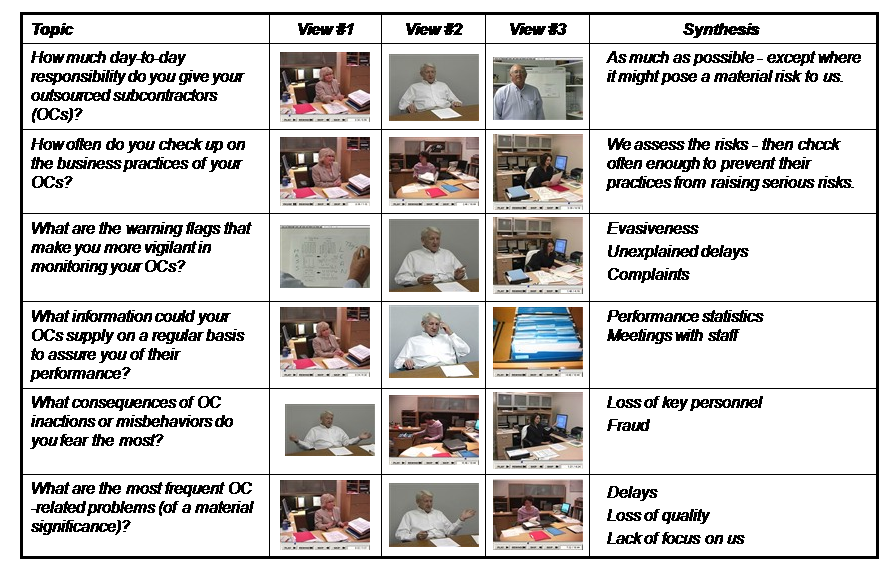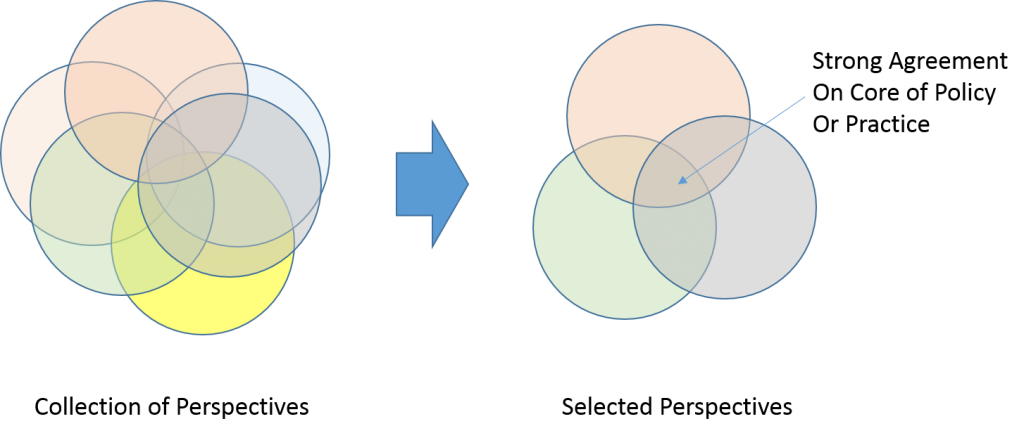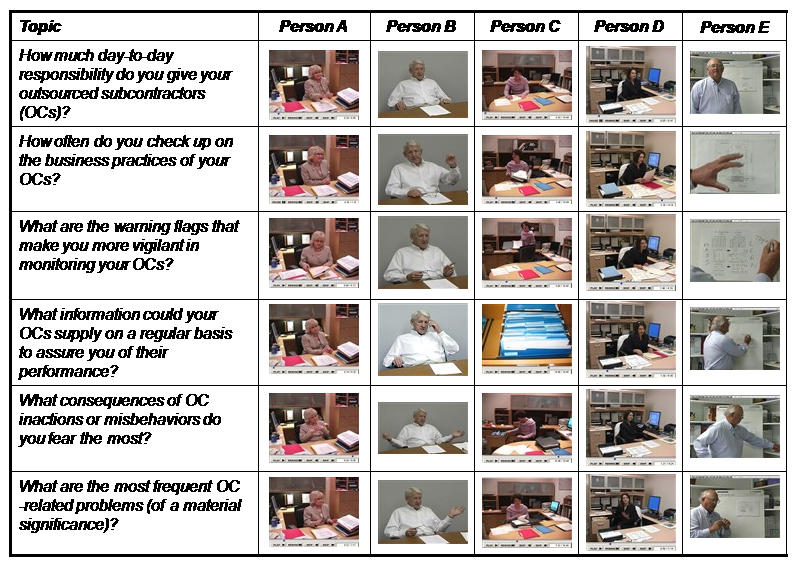Every organization struggles to communicate policies that are important, but require intelligent interpretation at the point of application. In fact, it is likely that most important policy directives apply to situations where there is uncertainty and an opportunity for intelligent choice. Can video help to address these types of challenges? I believe that it can … and I outline a conceptual approach to achieve that. In a companion article, I suggest how one might implement this approach with the Dartfish technology suite.
Problem Statement
Management policy directives must satisfy two conflicting objectives:
- They must be specific and precise to avoid adverse behaviors.
- They should be flexible enough that managers can use their personality, strengths, and creativity to best achieve the objective.
Policy-writers constantly struggle with this tension and trying to explain the range of solutions in English prose. Failure often results in costly confusion.
A Suggested Video-based Solution
I believe that technology has reached the point where a radically different approach is possible. In fact, it should be faster, easier and more reliable. The concept is to collect short video clips that illustrate how respected personnel choose to interpret and apply the policy. The goal is to show that personal differences are allowable – as long as the essential policy core is maintained.
My suggestion a gallery of short (less than 90 second) video clips that show authoritative experts answering a series of questions. If the policy in question were the policies and practices governing the use of outside subcontractors, for example, a part of the resulting gallery might look something like this:

The main element of this design is to collect a larger set of expert responses, then cherry-pick the 2, 3 or 4 that provide the best explanation coverage of the policy or practice. Schematically, it would resemble the following diagram. You would solicit open-ended inputs from a pool of experts. There would be lots of areas of overlap and agreement. There will likely be areas of difference … hopefully not substantive, but certainly in approach, style, or emphasis.

From the collection of perspectives, the policy makers would select a few answers or opinions that collectively meet the following criteria:
- All of the clips must correctly address the core policy or best practice that the organization wants to convey.
- Clips are preferred if they exhibit clarity in the assessment or decision-making criteria
- Otherwise, the clips would be selected to emphasize legitimate diversity in approach.
- Everything else being equal, it would be nice to select clips that show sincerity and perhaps a little bit of drama
Possible Applications
Asset for Web Training
The gallery would be an asset that is referenced from other, independent, WBT training titles to illustrate:
- Corporate flexibility, tolerance and support for diversity
- That policies can be consistent across varied applications and contexts
Instructor-Led Training
The galleries could be used to teach employees how to reason out the intent and application of specified corporate policies. A class plan might proceed as follows:
- Instructor frames the context and intent of a relevant policy
- Class members are formed into groups
- Each group reviews clips for a given topic from the gallery to:
- assess the quality of the respective answers
- identify any common threads of policy application
- Each group writes and presents a synthesis statement on the topic
- The class discusses the alternative synthesis statements
- The class compares their statements to the official version
- The class and the instructor discuss and resolve any ambiguities.
A Policy Development Tool
The process described for classroom training could also be applied as part of the process of policy development and refinement. Instead of student groups, the groups would consist of stakeholders.
A Management Reference Tool
The gallery can be published on the Intranet as a permanent reference for managers. This might have a number of potential benefits:
- Give managers an immediate point of reference for policy questions.
- ‘Stiffen the backbone’ of less senior employees to do the right thing.
- Encourage broader discussion of policies and their implications in social business platforms
A Policy Standard
In conjunction with traditional policy documents, a gallery like this may serve as a “loose-tight” standard for corporate action. It clearly defines the policy limits on behavior at the same time that it demonstrates the flexibility that is permitted concerning the manner or style with which the policy is implemented.
A New ‘Standard’ for Corporate Culture
This last item is fairly speculative. It seems at least plausible that a company could use this type of tool to influence the corporate culture. The key would probably lie with the individuals that are selected. Specifically, the selected individuals should be opinion-leaders that manifest one or more of the following characteristics:
- they are in positions of authority
- they are widely viewed as having been successful in their jobs
- they are respected and/or liked
- they are highly qualified
If the individuals are respected and admired and their views have management sanction, one would hope that a cross-sectional summary of their opinions would serve as a valuable affirmation of the corporate culture – one that reinforces critical ideals while recognizing individuality and diversity in applying those ideals.

